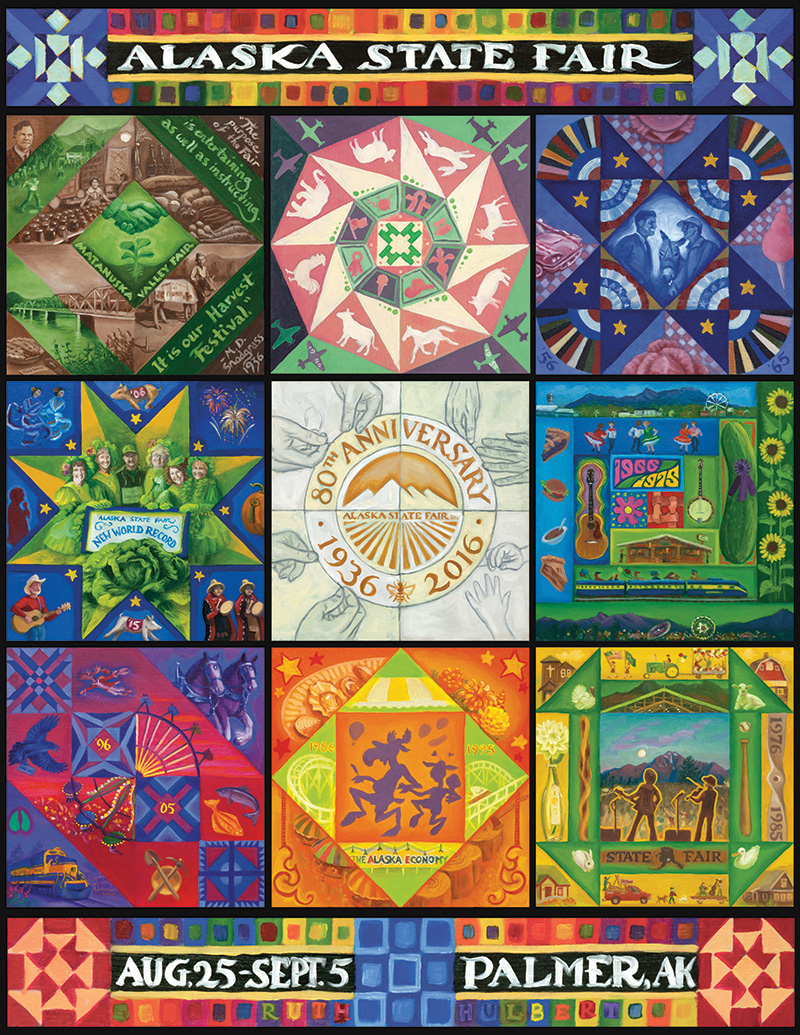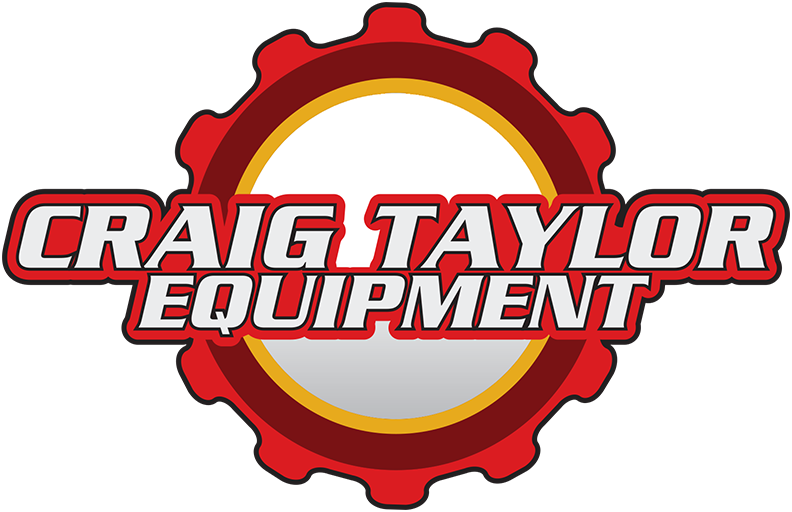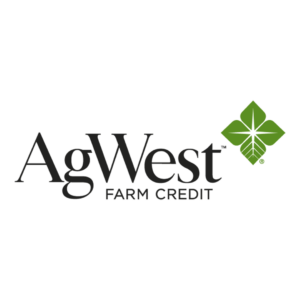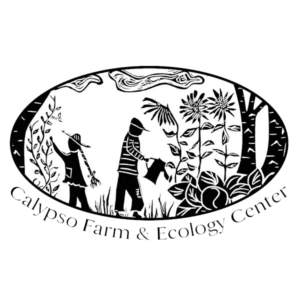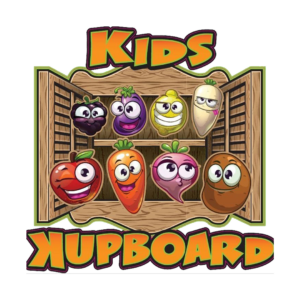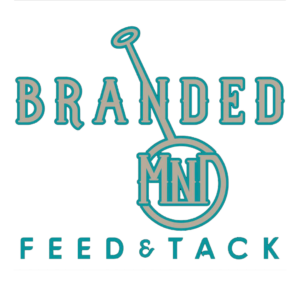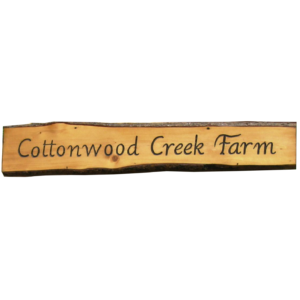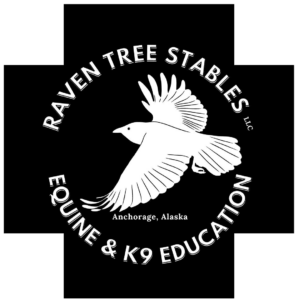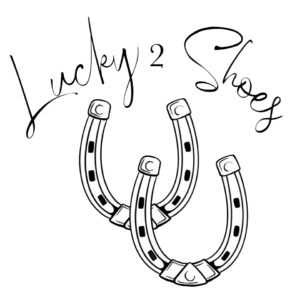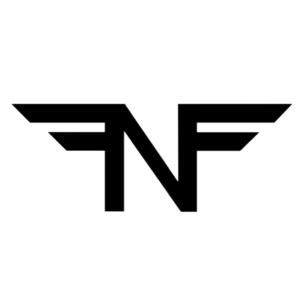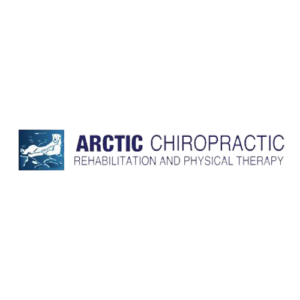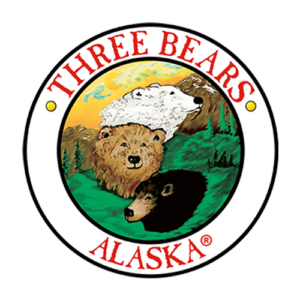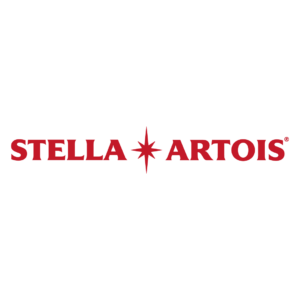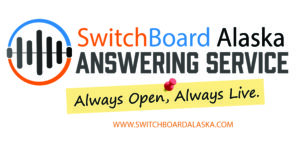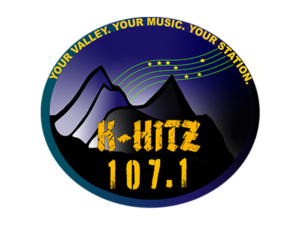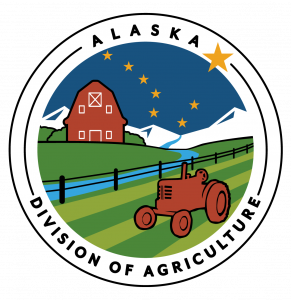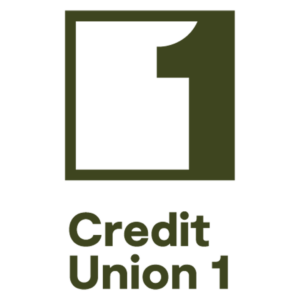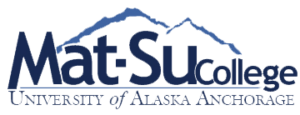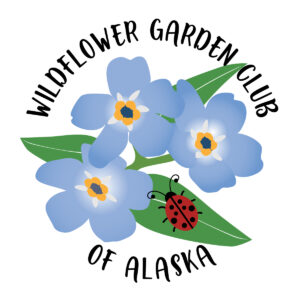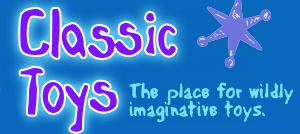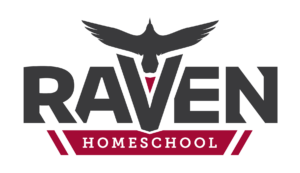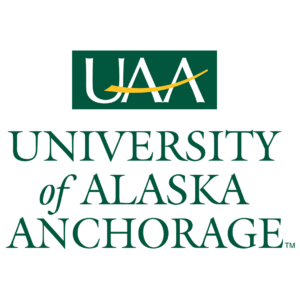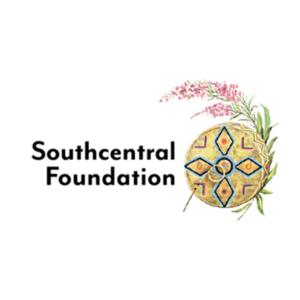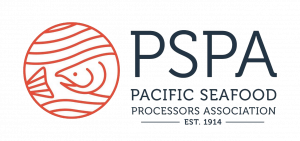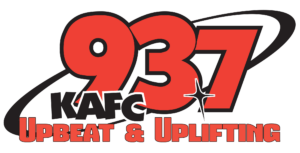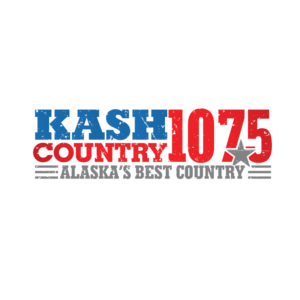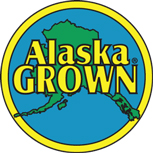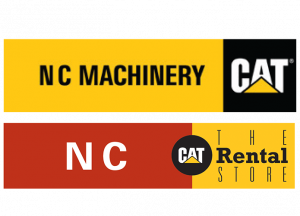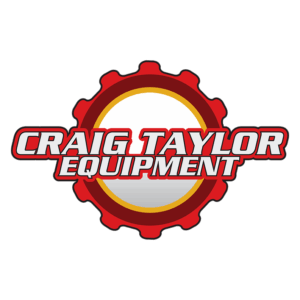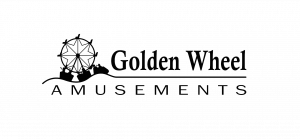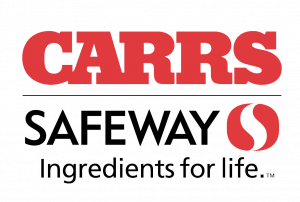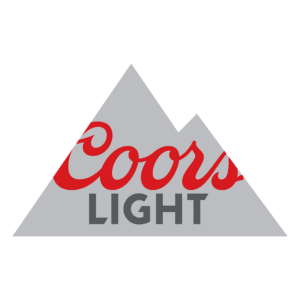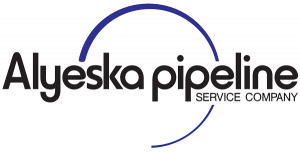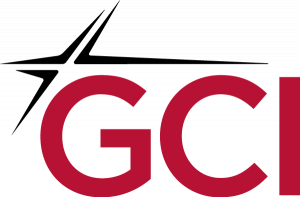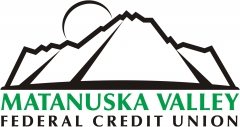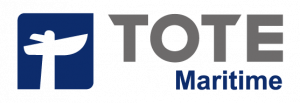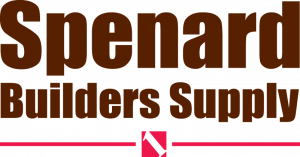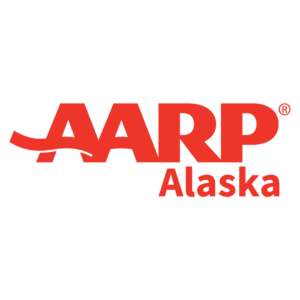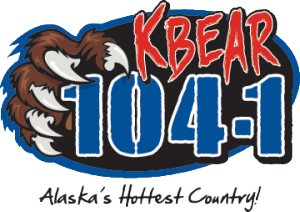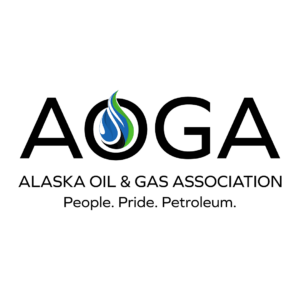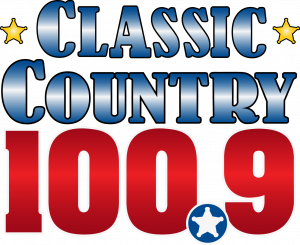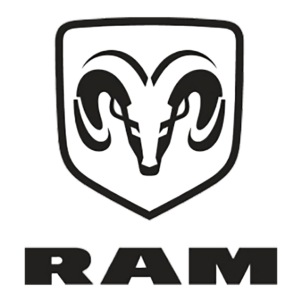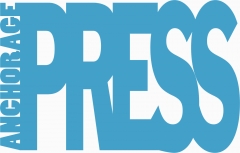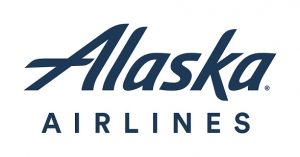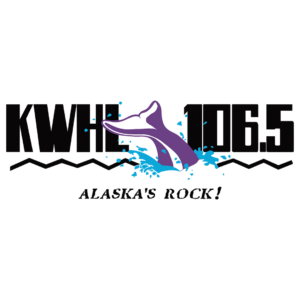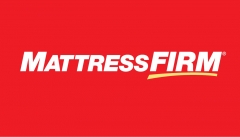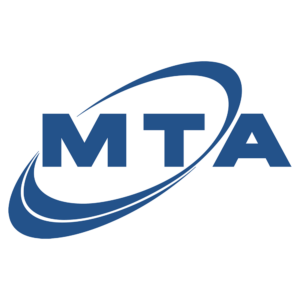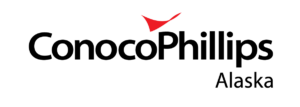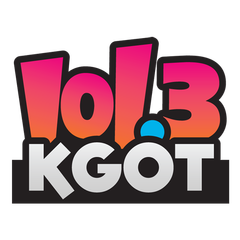Fourth-generation Alaskan and artist Ruth Hulbert designed the 2016 Fair commemorative poster artwork, unofficially titled “The Work of Many Hands.” The poster’s quilt pattern includes eight squares, representing significant moments in each decade of the Fair, plus one square representing the Fair as an ongoing work in progress. Hulbert carefully researched the Fair’s history as part of this project, and her notes on each square are shared below.
Hulbert’s artwork is also featured on a quilt commemorating the Fair’s 80th birthday. The queen-size quilt, quilted by local quilter Kathy Rockey, is being raffled off to raise money for the Fair’s scholarship fund. The quilt will be on display at the daily quilt show in Irwin Exhibits during the Fair. Raffle tickets – $10 for one or three for $25 – will be available at the Main Office or at the Plaza and Irwin souvenir booths during the Fair.
Click/tap on each square for information on the decade it represents
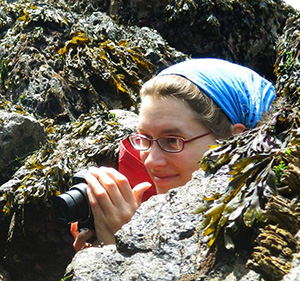
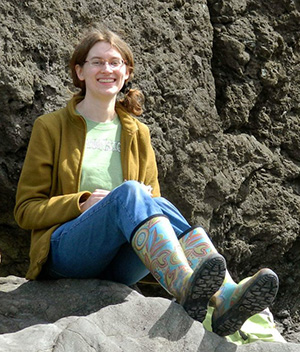
About the Artist
Ruth Hulbert was born and raised in Palmer. She graduated from Palmer High School in 2004, and studied art and dipnetting with WB (Brad) Hughes of Homer (who painted several popular posters for the Alaska State Fair). She graduated from Western Washington University in 2008 with a bachelor’s degree in biology and painting, and got a certificate in natural science illustration from the University of Washington in 2013. She’s worked at Fireside Books, worked as signmaker for the Fair from 2005 to 2011, and painted the Fair poster in 2007, 2009 and 2015. Presently she lives in Bellingham, Washington, where she works in an art gallery as a picture framer.

1936-1945
Quilt pattern: “Depression Block”
This simple pattern popular in the 1930s was a thrifty way to make strips of available material into a beautiful quilt, and the green and brown represent the homespun, agriculture-centric quality of the first Fairs in Palmer. The “fabric” used in this square is painted to look like historical photos (some strips are copies of actual photos, some have been altered or invented). The center image of a handshake over a newly-planted cabbage seedling represents that the Matanuska Valley Fair started as a cooperative effort — closely tied to the Colony, but put on by Colonists and pre-Colony settlers working together via the Northland Pioneer Grange, and spearheaded by M.D. Snodgrass of the University of Alaska Experiment Station. The Fair was the work of many hands from the start, a true community effort. Opening ceremonies for the Fair on September 4th 1936 were coordinated with the opening of the Knik River Bridge, appropriate since even today the Fair connects Palmer to the rest of Alaska and to the outside world. Some features of the early Fairs (held at the central school, shown in the background of the baseball game) were displays of canning and quilts, baked goods, crops and livestock, homemade root beer, games and competitions. I directly or indirectly represented a variety of early Palmer people in this square: Snodgrass in the upper left, a Colony Kid with his 4-H calf, pre-Colony settlers in the handshake and in the prize-winning rhubarb pie (settler Fanny Werner swept that category for years), and the woman leaning on the table of canned goods is meant to be Lydia Fohn-Hansen of the University of Alaska Extension Service, who taught many colonists how to weave, can food, and other useful skills. (She later recruited my grandmother to come to Palmer as an extension agent.) The darker strips to the right side of the square represent the years the Fair was suspended for WWII.
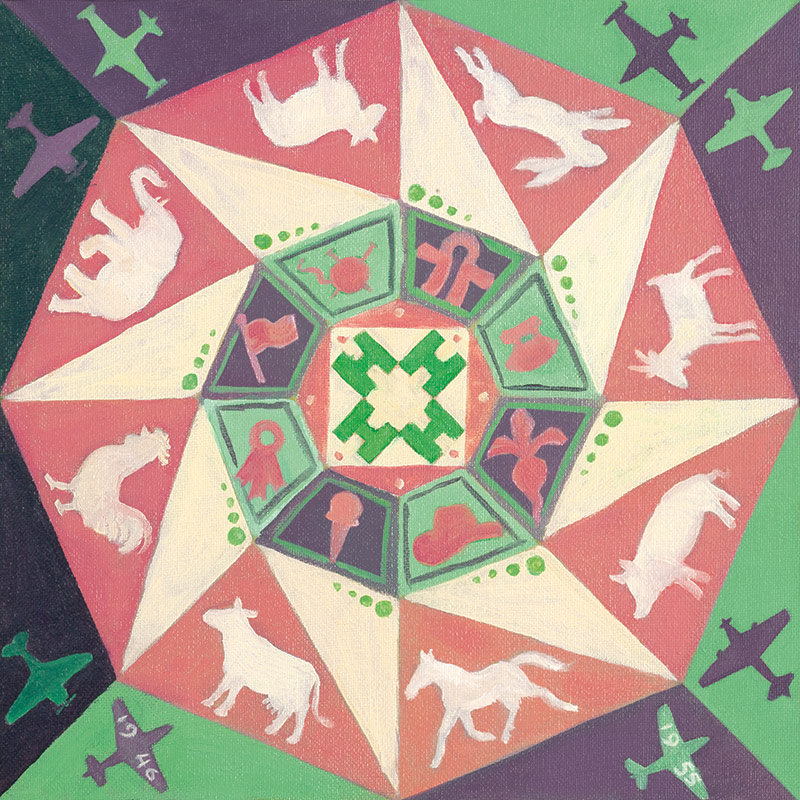
1946-1955
Quilt pattern: “Carnival Time” (center piece: “4-H Quilt”)
The Matanuska Valley Fair went on wartime hiatus from 1942 to 1946, but returned in full force in 1947. The first carnival rides appeared in 1950, and a big air show in 1951. I couldn’t find which planes were part of that show, but the silhouettes around the edge of this square (P-36, P-40, P-51, and F-80) were all airplanes that were at Elmendorf AFB during that decade. Despite the new attractions, the Fair in this decade was still centered on local agriculture. Sharp eyes will notice one animal is not like the others: the elephant among the farm animals represents the oldest booth at the Fair still in operation today, the Republican Women’s booth, started in 1947.
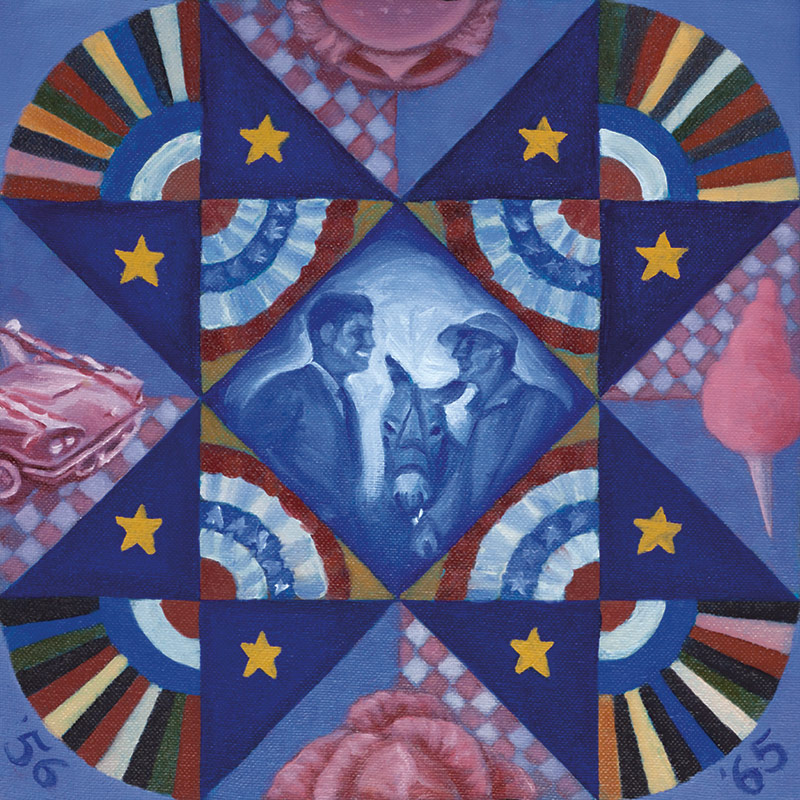
1956-1965
Quilt pattern: “Tippecanoe and Tyler Too” (corner pieces: “Fan”)
The Fair’s third decade was a momentous one, with a name change and a petition for the Alaska State Fair to be the official State Fair, even before Alaska actually became a state in 1959. (The Tanana Valley Fair made the same request, so the two fairs share “official” status by taking turns every other year.) In 1960, John F. Kennedy became the first (and so far, only) major presidential candidate to visit Palmer, with a parade and a speech at the Fair. The center image comes from a photo of Kennedy meeting local farmer J.V. Kruscavage (and his donkey, Cindy), surrounded by patriotic bunting and eight gold stars for Alaska statehood. The fan designs in the corner represent the colored wheel of the Elks’ “Rat Race,” a fixture of Fair entertainment since the fifties. Side images are the 1960 Thunderbird which got stuck in the mud while carrying JFK and local dignitaries to the fairgrounds, a Husky Burger (at the Fair since 1962), cotton candy (spun by Beta Sigma Phi since 1958), and a cabbage representing Max Sherrod’s world-record-breaking 61-pound cabbage from 1957. There are several quilt block patterns named after the 1840 presidential campaign slogan “Tippecanoe and Tyler Too;” I chose this one because it is also a variant of the pattern “Broken Dishes,” of which there were many in Alaska in 1964.
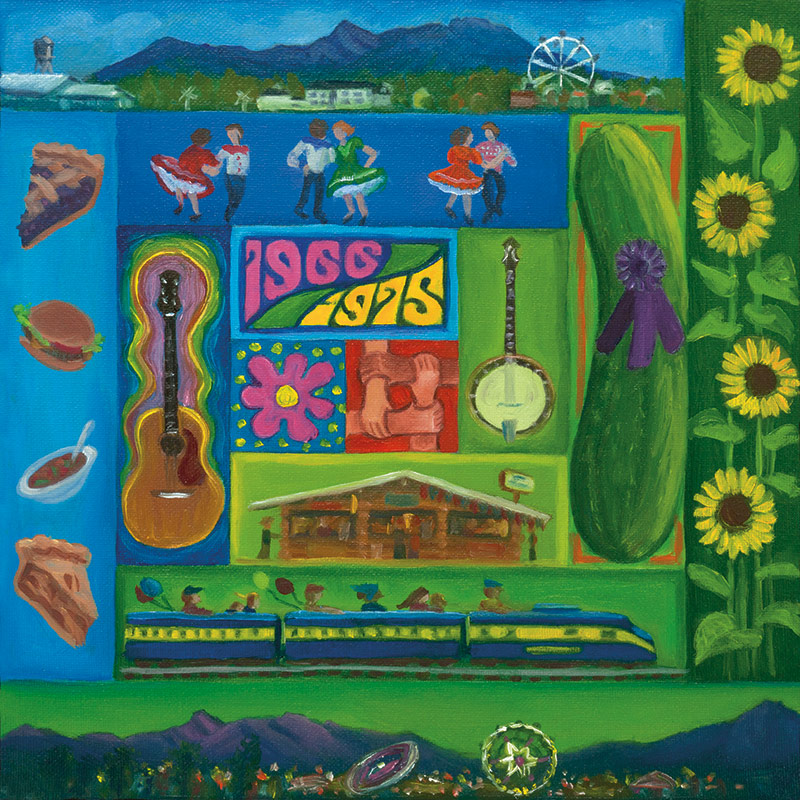
1966-1975
Quilt pattern: “Log Cabin”
“Log Cabin” is a favorite traditional pattern representing hearth and home. In 1967, the expanding Alaska State Fair moved out of downtown Palmer (the old fairgrounds then becoming the site of the Palmer Pioneers’ Home) and built a permanent home in its current location – with the iconic log cabin food booths along the midway. Images here include the Fair in both locations, the miniature train fairgoers could ride around the grounds in the ’70s, crop and flower exhibits, music and dancing, food from Slippery Gulch (started 1968), and one of the midway cabins built by local logsmith Jimmy Hitchcock.
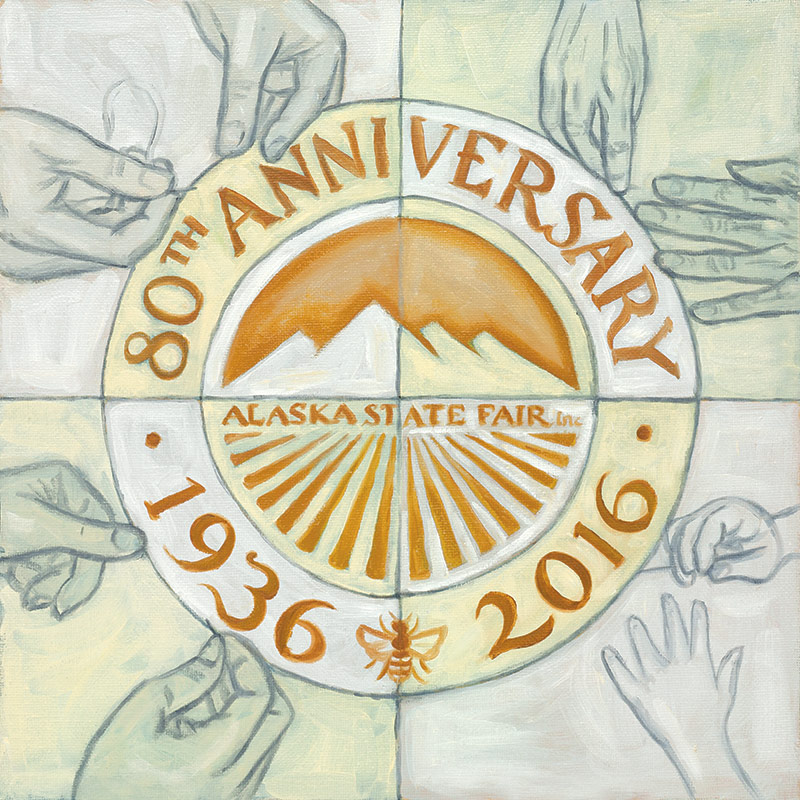
Center square: “Fair Play”
The Fair is a work in progress, pieced and stitched together every year by the efforts of all sorts of people working together – volunteers and staff, farmers and 4-H kids, artists and musicians, cooks, craftsmen, dancers, rodeo riders, Alaskans of every stripe and people from around the world who come to Alaska for the Fair.
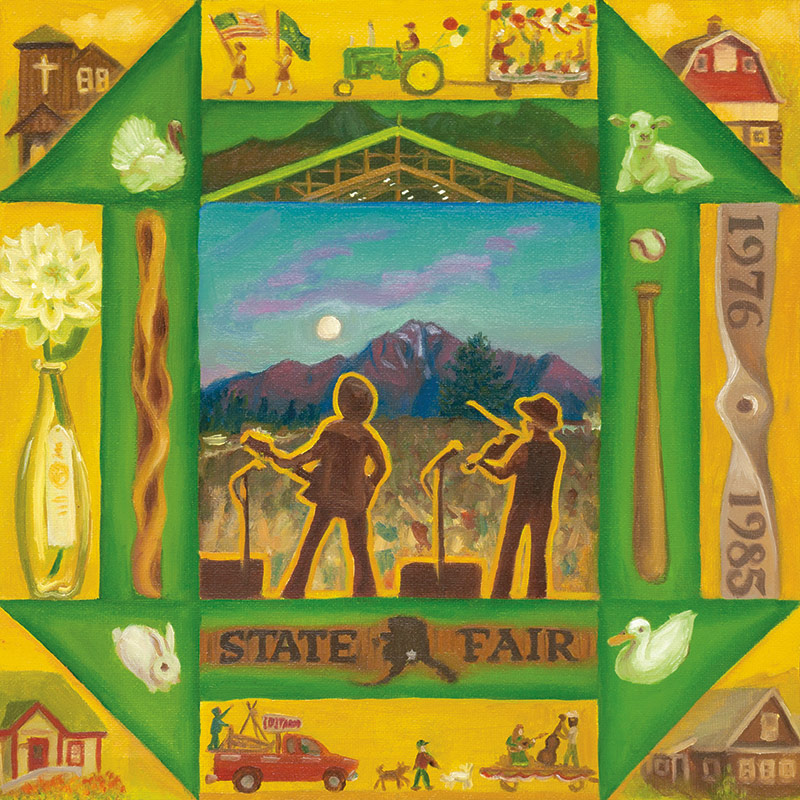
1976-1985
Quilt pattern: “Hole in the Barn Door”
This decade was a time of big changes for the Fairgrounds, most notable being the construction of Farm Exhibits, the Borealis Theatre, and the Colony Village of historic buildings moved to the grounds. “Hole in the Barn Door” can describe the Borealis hill being built out of the dirt from the hole dug for Farm Exhibits, and also that the money ran out before the barn was fully enclosed. The shape of the pattern makes a baseball diamond, representing Hermon Brothers Field, constructed in these years on the Fairgrounds. Small images include farm animals, Colony Village buildings, a Fair parade, flower exhibits, a diamond willow cane, and a propeller representing the Transportation Museum which was housed on the Fairgrounds from 1976-1992. The central panel depicts the time in 1981 or so when the full moon rose over Pioneer Peak and was so beautiful that the band on the Borealis stopped playing and everyone turned to watch the show over the mountain.
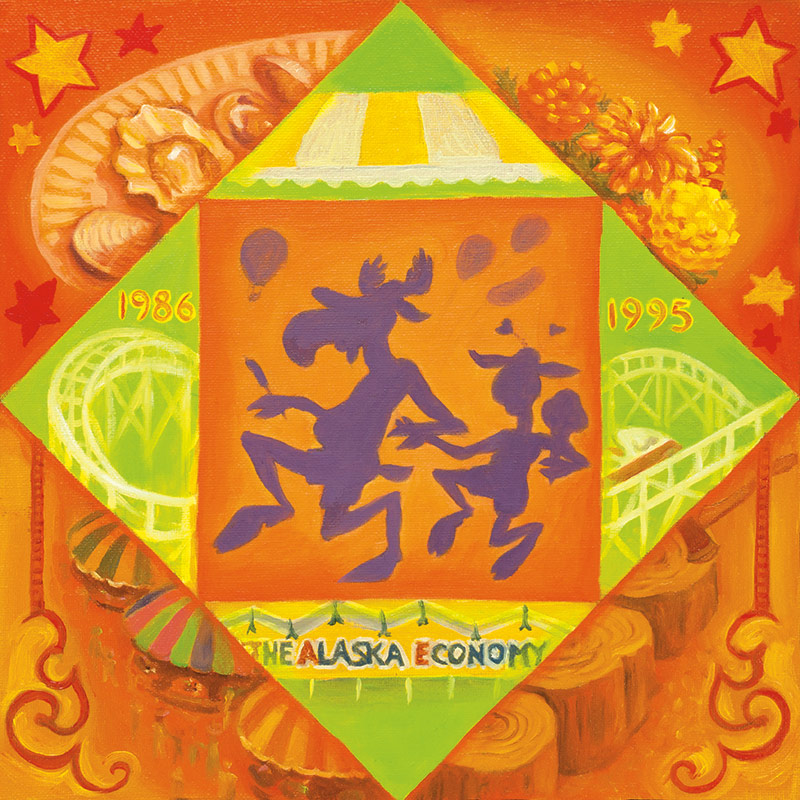
1986-1995
Quilt pattern: “Economy Square”
As a little kid I didn’t appreciate how hilarious it was that the old rollercoaster on the midway was actually named “The Alaska Economy,” nor did I know that I was growing up in the midst of a recession following the frenzy of the pipeline years. The Fair has been around through boom and bust, and Alaskans will find ways to get by and have fun even without the oil money – we’ve done it before. The center square here features the silhouettes of Fair mascot Moosey and pal from the 1989 poster, one in a long line of popular posters by Brad Hughes, whose art defined the Fair visually for over a decade. Also shown: flowers from the Fair’s gardens, logs from the lumberjack show, midway rides, and oysters and clams (another thing about the Fair I took for granted as a kid, and now know to savor).
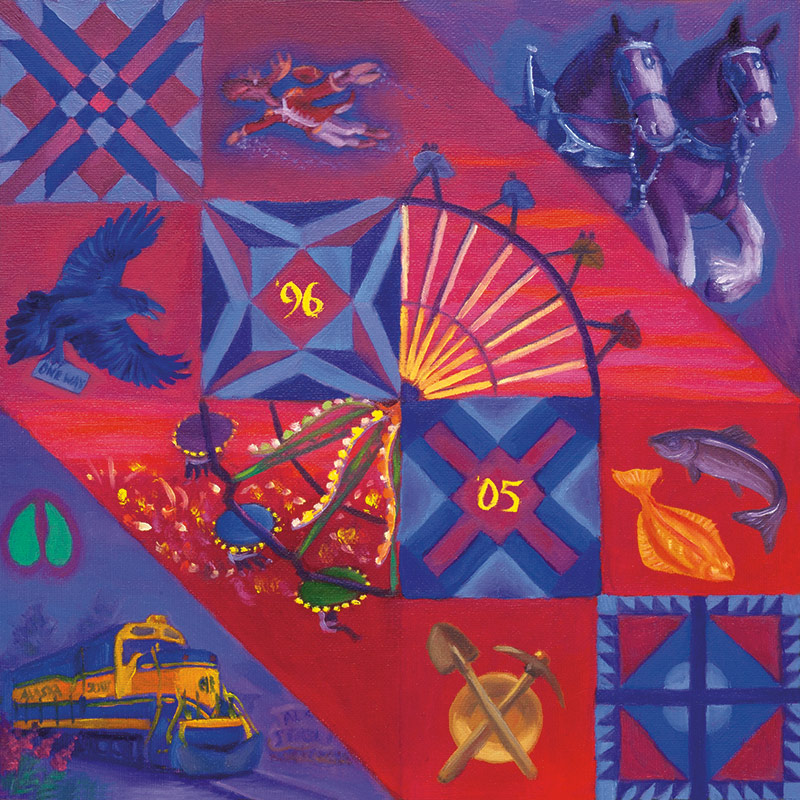
1996-2005
Quilt pattern: “Railroad Crossing/World’s Fair” (smaller squares, left to right: “Railroad Crossing,” “World’s Fair,” “At the Depot/Railroad Crossing,” “World’s Fair”)
Traditional quilt blocks often have several names for the same pattern, or several patterns with the same name. Here I chose a pattern with two names that both fit the decade, then filled its row of diagonal squares with tiny versions of other blocks also known by those names. “Railroad Crossing” marks the opening of the Green Gate and Alaska Railroad depot in 2004. “World’s Fair” is a nod to 1998’s “Gold Rush Expo,” an extra-long 18-day Fair put on in the spirit of the big world’s fairs and expositions of times past. On a sunny Saturday in 1996 which busted all previous attendance records, fairgoers saw new star LeAnn Rimes perform on the Borealis Stage – the “Blue” raven with a “One-Way Ticket” marks a couple of her hits, and also stands for the opening of Raven Hall in 1997. This decade also saw the Fair’s Diamond Jubilee in 1996, the arrival of halibut tacos and salmon quesadillas, a visit from the Budweiser Clydesdales in 2000, and the Astro Wheel towering over the midway.
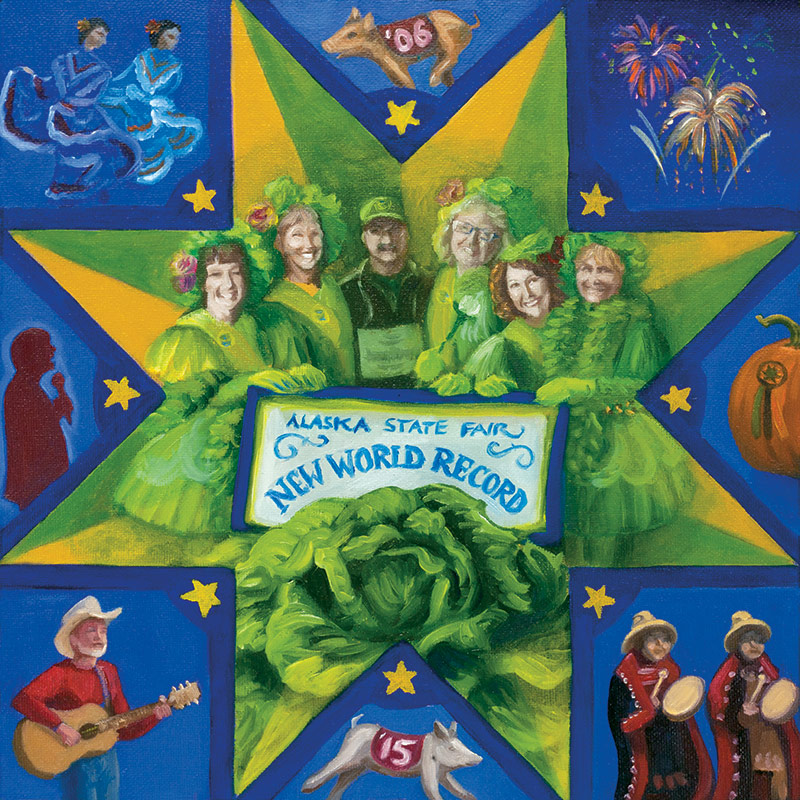
2006-2015
Quilt pattern: “North Star”
I remember singing along as Hobo Jim led the crowd in the “Alaska Flag Song,” at a ceremony at the Woodlot celebrating the 50th anniversary of statehood. (It was opening night of the 2008 Fair; the governor had a Blackberry in hand and seemed distracted, Senator Stevens and Katie Hurley sat to either side of her, John Tracy emceed, and my friend from California marveled that everyone actually knew the words to our state song.) The pattern “North Star” echoes the eight-pointed star from the 1956-1965 square, while the name connects back to the Fair’s beginning (the ships North Star and St Mihiel transported the Matanuska Colonists). The center image shows the Cabbage Fairies, Scott Robb, and his world-record 138-pound cabbage in 2012. The Fair, like the cabbages, has grown quite a bit since the early efforts. This decade also saw Alaska’s largest-ever fireworks display, the start of pumpkin weigh-offs, and many performances by big-name acts including two by Garrison Keillor. From 2005 to 2011 I was the Fair’s signmaker, back when the signs were still all hand-lettered; this square includes a few acts I remember particularly well after writing them out many times on Colony Stage signs: upper left is Xochiquetzal Tiqun Unkda, lower right represents Lepquinm Gumilgit Gagoadim and Naa Ludiisk Gwaii Yatxi.
